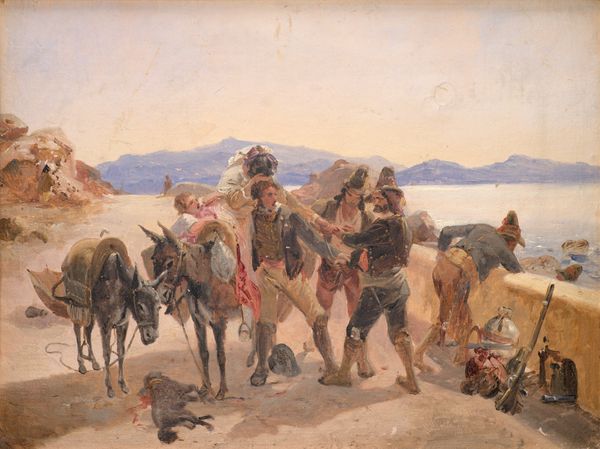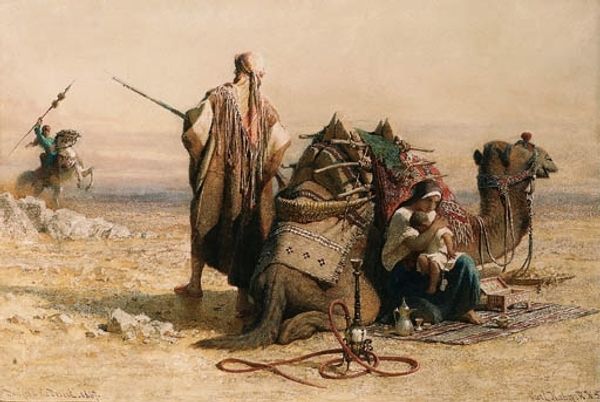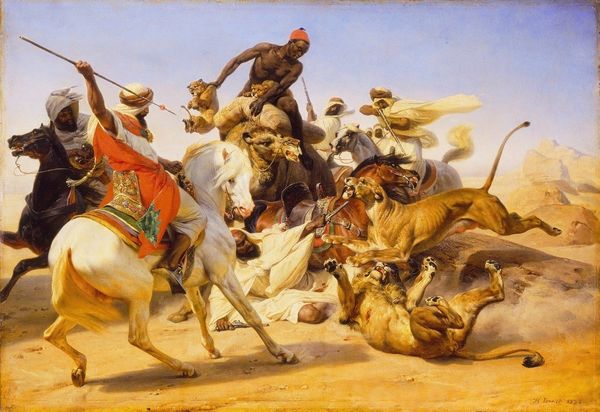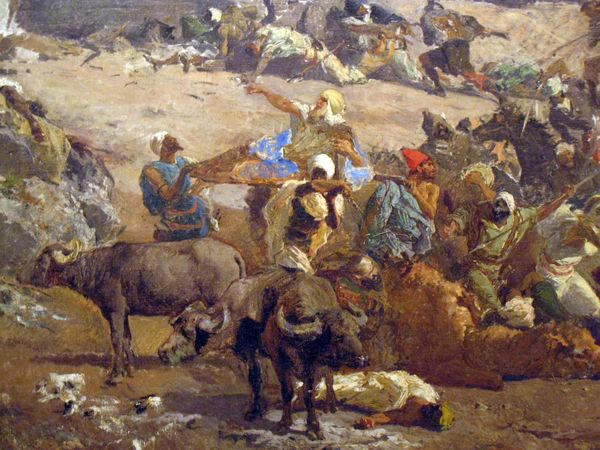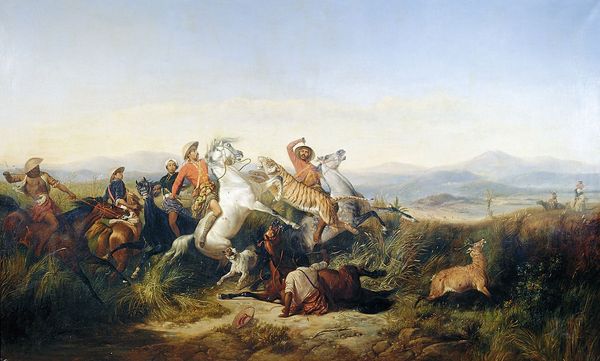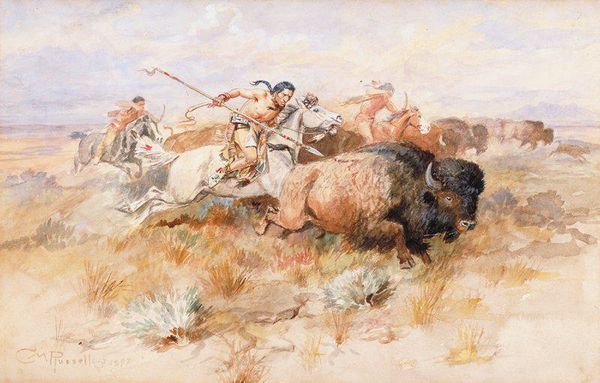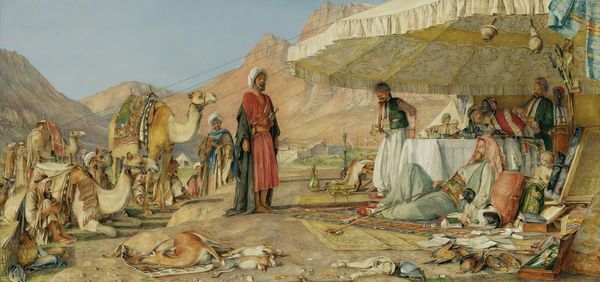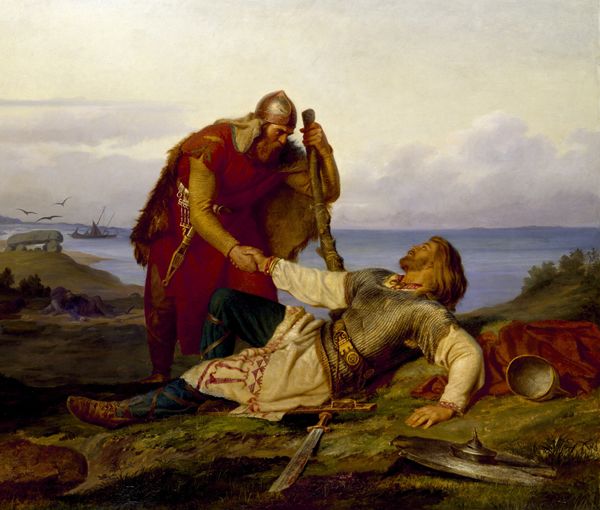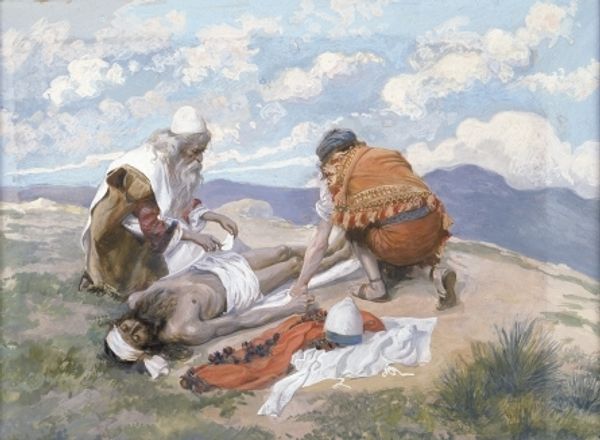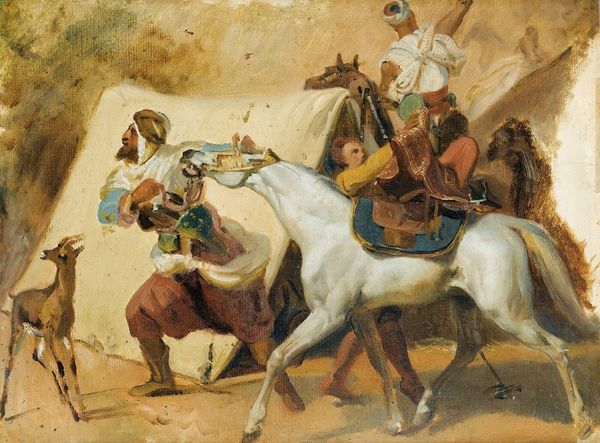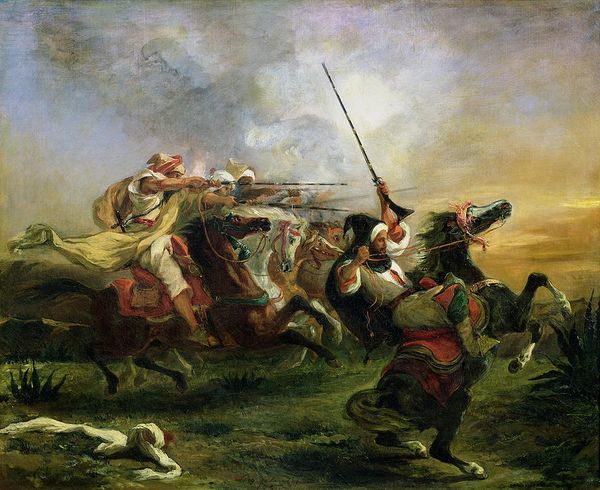
painting, oil-paint
#
narrative-art
#
painting
#
oil-paint
#
landscape
#
figuration
#
oil painting
#
romanticism
#
orientalism
#
history-painting
Copyright: Public domain
Curator: Welcome. Here we have Horace Vernet’s 1848 oil on canvas, "The Adopted Child". It is currently housed here at the Palazzo Brera in Milan. Editor: My initial impression is one of striking contrast – a European soldier amidst what seems to be a harsh, desolate landscape, yet there's this very tender image in the foreground, full of pathos. Curator: Absolutely. Vernet, known for his Orientalist works, situates this scene within the context of French colonialism in North Africa. The painting, created in a tumultuous time in French history, uses Romanticism to portray the nation in North Africa as a charitable savior. The medium of oil paint allows the painting to focus in on the details of fabrics, landscape and persons of the piece, allowing it to create its emotional argument. Editor: I agree, oil paint contributes greatly to the detailed and emotional realism. Consider how the artist models the textures of the sheep's wool in contrast to the clean white garments and basket weave that create visual patterns that draw the eye towards this intimate scene of communal nurturing between soldier, woman, baby and beast. Curator: It is a very deliberate composition that seeks to communicate France's strength as well as compassion through material goods and generosity, don't you think? Vernet presents an interesting commentary on colonialism's influence in terms of landscape transformation with this orientalist perspective. The land, the animals and the peoples, all subjects who are consumed. Editor: Precisely, the narrative implications are profound. Notice, too, how the arrangement of the figures – the supine woman, the soldier positioned as protector, even the vigilant gaze of the lamb – function symbolically within the painterly structure. The formal elements are all working towards reinforcing this tableau. Curator: Yes, a tableau vivant brought to life through oil and canvas, perpetuating its perspective through material means. We have here oil paints that capture fleeting moments while also serving state interests; Romanticism finds concrete expression within material realities of power, race, and even exploitation. Editor: It all certainly provokes thoughts on both the tangible presence of the medium and its effectiveness in constructing narratives about this historic interaction between colonial power and subject. Curator: A critical point well noted, reflecting how, at the level of making and distribution, art inevitably is touched by the same forces which give the world form. Editor: A potent convergence of material form and ideological meaning indeed.
Comments
No comments
Be the first to comment and join the conversation on the ultimate creative platform.
